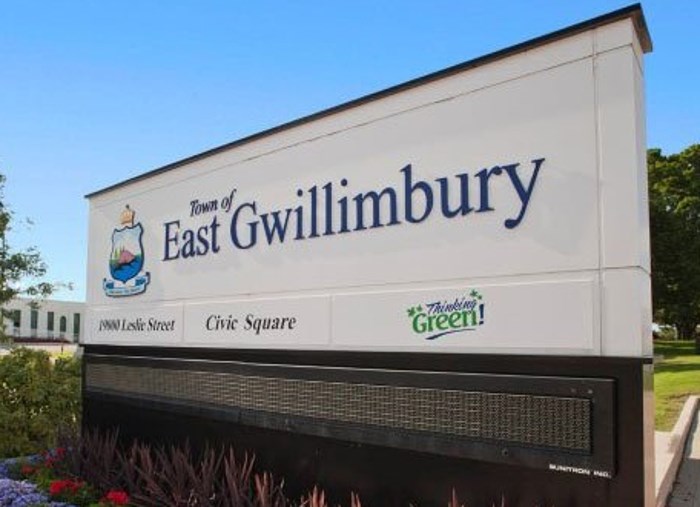Fashion
Toronto Thrifters Lament Fast Fashion Take Over of Thrift Stores Racks – On The Record

139
Listen to the whole story here:
The new Value Village on Dovercourt Road, north of Bloor, stocks the usual used clothing you’d expect, but also racks of fast fashion from online stores like Shein and Temu.
“Every third item is going to be a Shein item,” said Alexandra Gervais, who works as a cashier at that particular Value Village.
“Fast fashion absolutely makes it a lot harder to be sustainable within thrifting,” she said.
The global clothing discard rate is 92 million tonnes annually, according to calculations double checked by Ivey Business School at the University of Western Ontario. Canada contributes 500,000 to one million tonnes, with the distribution of clothing being sent off to landfills or incinerated, according to 2024 numbers shared with Ivey.
Fast fashion is defined by the Collins online dictionary as “the reproduction of highly fashionable clothes at high speed and low cost.”
“Thrifting is only going to get worse, and in a couple years, it’s only going to be fast fashion [filled] in stores,” said Seanna Fiedtkou, an avid thrifter and former employee of Black Market Vintage.
“It’s not sustainable in wearing so it’s going to break faster,” said Laurie Beattie, an experienced thrift shopper now transitioning to fast fashion purchases.
She said purchasing fast fashion at thrift stores doesn’t count as sustainable shopping because it’s going to repeat the cycle of handing short-lived clothes to thrift stores.
“[I believe] in buying high-quality for good prices and not having to buy, per say, a new coat every year compared to every few years,” said Beattie.
According to RoadRunner, a waste management and recycling company, textile waste takes a long time to break down – as long as 200 years for some materials.
Fiedtkou says donating clothes to Value Village may seem like a sustainable way to reduce waste, but warns about the harmful effects of clothing ending up in landfills, ultimately destroying the environment and the quality of life for many individuals.
According to the education section of the National Geographic website, “the air pollutants escaping from the landfill can also cause respiratory problems in people who live close to the landfill.”
“It’s going to these factories that are being shipped away, to people in other countries that don’t want it [and] don’t need the product,” Fiedtkou said.
“Second-hand fast fashion disrupts the value proposition of thrifting because it neither offers the aesthetic nor the usability longevity of quality secondhand clothing,” wrote Henry Navarro, a TMU fashion expert, in an email response.
He says the secondhand fashion market would be more effective in its role as a sustainable market if fast fashion retailers and the people who make the clothes make the planet their priority.
“As long as fast fashion is clogging the upstream market, there is going to be a sustainable bottleneck in the downstream secondhand one,” wrote Navarro.
With its rise in popularity, Shein is one of the many fast fashion brands contributing to waste and unsustainable production like carbon emissions, according to EuroNews.
“I’ve definitely seen Zara [at thrift stores],” said Abi Braybrook, a mom balancing a full-time job with a passion for fast fashion shopping.
Braybrook said she’s also noticed second-hand shops sell brands like Hollister, Ardene and Garage at higher prices compared to the actual companies themselves at times.
“I feel it’s kind of like people [are] getting scammed,” said Braybrook.
Fiedtkou said in her experience with thrift shopping, it’s rare for customers to be purchasing fast fashion brands.
“They could get it, if not the same price, cheaper, if they just bought it straight from the source,” said Fiedtkou.
On Value Village’s Purpose and Value webpage, they define themselves as the go-to place to serve the environment by providing “sustainable style inspiration.”
But Gervais says, “We’re not a curated shop,”
“Our team carefully sorts the goods we receive, with a focus on identifying those that can be reused,” said Nicole McPherson, VP of Canada Field Operations Value Village in an email response.
She said fast fashion within Value Village is an occurrence the company has been dealing with for over a decade. Despite the challenges brought by fast fashion, McPherson said thrift stores like theirs remain a valuable tool for reducing waste and take part in sustainable practices for the clothing items that don’t find a second home.
“When items are unsuited for or unsold at retail, we offer them for sale to our wholesale customers for reuse or repurposing,” said McPherson.
“I see no problems with thrift stores taking in any type of donation,” said Sherwin Karimpoor, a former employer of American Eagle and third-year Language and Intercultural Relations student at TMU. “A donation is a donation, someone is going to be able to eventually find that piece and reuse it [or] recycle it in some type of way.”
Karimpoor said despite some donations being from fast fashion brands there’s always someone that might need or make use of the clothing items.
“If you do find, let’s say, American Eagle jeans, which are pretty good quality at a thrift store, I would say go for it,” said Karimpoor.










